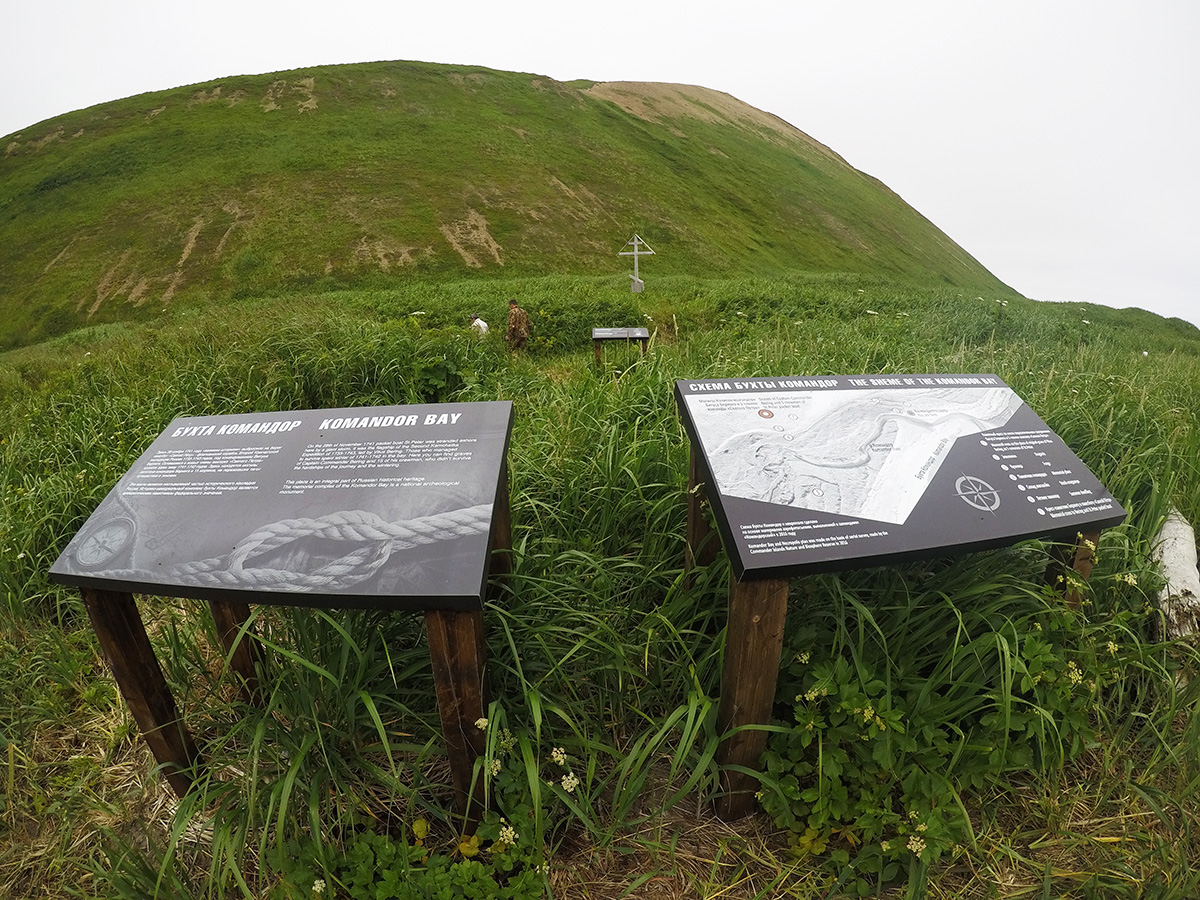The reserve has recently joined The Great Northern Expedition Route touristic project, which follows the path of the First and Second Kamchatka Expeditions and of the Academic Party headed by Vitus Bering and Alexey Chirikov. These research missions resulted in the creation of a full and detailed map of the Russian Empire.
Within the project framework, each participating town or city connected with the name of Captain-Commander will have special Izi Travel platform with audio guides in free use, including an offline format. As a result, the project creates one of the longest touristic routes, which includes 40 regions of Russia and 11 countries.
Russian part of the route finishes in Komandor Bay in the Commander Islands Reserve. “Today we work on audio guide for Komandor Bay in close cooperation with the Commander Islands Reserve and plan to finish it this spring,” said Ildar Mamatov, Head of the project and member of the Russian Geographical Society, during presentation of the project on January 16 in Saint-Petersburg.

Komandor Bay, Bering Island. Territory of the Commander Islands Nature and Biosphere Reserve. Photo by Ulyana Ledok
“The Commander Islands Reserve is rich with wonders of nature, rookeries, colonies of seabirds, whale migration routes, but also has a unique history, as in 1741-42 Bering Island hosted the crew of the wrecked ship of the Second Kamchatka Expedition. Here the crew members lived and some of them died. The graves of those, who did not survive the hardships of the journey, are still in Komandor Bay. We carefully protect the burial grounds and want to share the story with guests of the Commander Islands,” said Deputy Director for Tourism of the Commander Islands Nature and Biosphere Reserve Julia Pulit.
As you may know, the Great Northern Expedition of the 18th century stretched from the northern coasts of Eurasia, through Siberia, Kamchatka, lands and seas of the Pacific Ocean, Japan and opened the unknown to scientists and seamen northwestern coasts of America. The participants conducted research and made scientific discoveries in geography, geology, physics, botany, zoology and ethnography. Due to this expedition, the first full detailed map of the Russian Empire was created.










